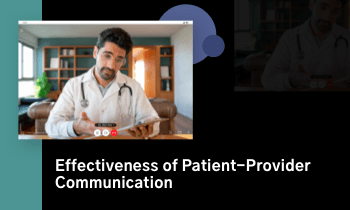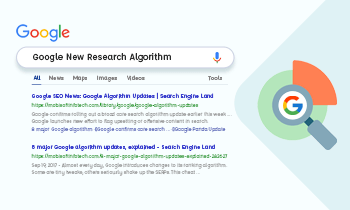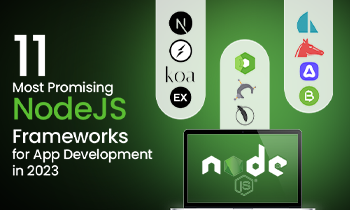This blog is in continuation to our mobile app development process series that describes the second important phase – Planning and Strategy, which is needed to convert your initial product discovery into a successful up and running mobile app. Understand the basics of development tactics, their essential elements, and much more.

Mobile Application Development – Planning and Strategy
At this second step of the mobile app development process, product ideation starts taking shape into a solid mobile app development project plan. It’s the beginning of defining user journeys, features, functionalities, and the picture of your entire product.
You gain the capabilities to identify the major development needs that will help you build your product roadmap. Later, these needs can also be grouped into specific delivery milestones to empower your mobile app development process.
At this stage, formulating a blueprint that defines your Minimum Viable Product (MVP) alongside prioritizing its initial launch helps you focus on finding out the required skills for your app development.
Focusing On Key Components of Mobile App Strategy
Now that you know what app strategy and planning in mobile app development means, we can move forward to understand the essential components of performing the same and making the most out of it.
Mobile App Portfolio
The app portfolio involves various things, including the size of the user base, app category, BYOD implementation, integrating the app with the latest technologies like IoT, hosting cross-device compatibility, facilitating biometric identification, etc.
To be precise, defining this portfolio for your app strategy is essential to closely observe the nature of the app, its target audience, and other prospects. Once you have a clear idea about your app portfolio, you are all set to determine the development standards and tools.
Mobile App Development Tools
Many companies often focus on integrating numerous features and functionalities into their application. Some of these features outline native tools, while others rely on a hybrid environment, making the mobile app development process more complicated and critical.
But you can overcome this situation by initially deciding between cross-platform, native, and hybrid development to use the right set of tools. You need to analyze the requirements and delegate them across your in-house and outsourced team of developers. However, if you have to build a small-scale app, you can work with a single team.
Support Infrastructure and Services
You need to have a generic idea about your user base before initiating the app hosting process. This process is indirectly linked to how you approach the support infrastructure. Doing it rightly shall optimize your application development strategy and entire budget.
As such, you need to discover the Infrastructure as a Service (IaaS) configuration to distribute the budget in a better manner. You have to harness the best server technologies to generate optimal results. Identify which DevOps and integrated development environment shall suit the process and prioritize standardization of platforms accordingly.
System Monitoring and Governance
After setting the standards for development and deployment, you have to monitor and define operational standards as well. Considering all the technologies and tools used, you can mitigate the risks associated with the development process by implementing a specific set of governance standards.
These standards should include strict policies for tools used and high-end protocols to observe smooth migration and system scale-up. Ensure that the protocols and set parameters support seamless troubleshooting, good deployment speed, resource reusability, and multitasking.

Checklist for Planning App Development Effectively
After understanding the importance of the key components mentioned above, you must be thinking that creating an app strategy is too easy. Indeed it is, but you have to consider many aspects and connect them to your app development process to outshine all the possible vulnerabilities and complexities. Here’s the checklist that you need to prepare before designing & developing your mobile app.

1 Business Goals
One of the key considerations you need to consider before starting your app development is understanding the overall business logic and app idea that should be aligned with your business goals. Assessing the right concept that connects your company vision to your app is imperative. You need to contemplate the what, when, why, and how of developing a mobile app to avoid any kinds of assumptions.
In addition, your end goal is to generate a good ROI and customer satisfaction in the longer run. For this, you need to focus on creating an app that solves a prevailing problem faced by your existing and future customers.
2 Target Audience
Another important aspect to count on is focusing on the target audience or user personas. Some of the features/ functionalities entirely depend on who is going to download and use the app exhaustively. You need a user journey-specific development strategy to engage all the potential users as per their demands, interests, preferences, gender, age, location, financial status, etc.
You need to plan your mobile app development process after thorough research on the kind of users it will be helpful for. Gaining this complete and comprehensive view of your target market plays a decisive role in app success.
3 Supporting Platform
For an app development project, choosing the right Operating System (OS) is a must, as developing apps running on multiple platforms and devices is common nowadays. However, there are two dominant platforms in the market: Android and iOS. You can either choose one or target both with a cross-platform approach per your business objectives and user base.
This selection would also impact your technology stack and the tools you are going to use across the development lifecycle. For instance, if you want to build an Android app, using Java or Kotlin can be a great idea, while for iOS app development, you can count on Objective-C or Swift.
4 Native or Hybrid App
Choosing between native or hybrid apps has become the need of the hour as it affects the complete development cycle. You need to pick the one that satisfies your target audience as native apps support only one platform, while hybrid apps can work on various platforms at ease. Making the right choice would prove profitable and boost your user engagement.
You also need to keep in mind that developing a hybrid app requires a reasonable budget and resources. But if your potential users use only one platform, then go for a native app as it proves cost-effective.
5 Framework
Many organizations look for a one-size-fits-all framework to satisfy the app requirements. However, they are unaware of the fact that every framework has its own set of pros and cons and serves a variety of needs. As such, choosing the right framework should be a significant aspect to consider while planning your app development strategy. You can either go for a native mobile development framework or prefer a cross-platform one.
However, you need to make this choice after analyzing the key capabilities you want your app to have. Also, make sure that it satisfies all the essential requirements of your chosen devices and operating systems.
6 Resources
Driving your app development plan with dedicated resources is a prerequisite. Ensure that you have enough team members to carry out the development process, or else you have to hire dedicated developers to satisfy your customized project needs. Take necessary steps to prioritize resource availability to avoid any delays and complete essential tasks within stipulated timelines.
Apart from checking the availability of team members, you should also go through the app budget and have a blueprint to distribute it across various development and planning stages effectively.
7 App Security
Users these days give a lot of emphasis on app performance and demand a highly secured user experience. And choosing a suitable database is the key to good app performance. You can decide the authenticity of a database by examining its structure, size of stored data, accessibility, speed, and scalability. The other important factors include the safety and security of data.
Foregoing through choosing a quality database shall help you offer a vulnerabilities-free mobile app and increase app security. Not compromising on data security would avoid attacks of viruses and malware as well.
8 Third-party Integrations
This should be a significant part of your software development strategy where your application requires the capabilities to interconnect with other services. As such, taking an ample amount of time to learn the intricacies of the third-party application programming interfaces (APIs) is a must. This helps your brand in implementing them correctly or integrating them into your existing system.
Your mobile app development process should also include a robust API management strategy by which you can easily use, execute, monitor, and manage various available third-party integrations.
9 UI/UX Experience
A sophisticated UI/UX design is really important to create powerful mobile applications. With such a design, your app can offer an intuitive and engaging experience to your target audience. So, make sure that you undertake all the design elements that deliver faster loading times and a highly responsive app environment. You also have to come up with an app design that reflects smooth navigation.
Your design strategy should maintain minimalism alongside encouraging contemporary style via compact input fields to offer smooth interaction and a better UI/UX experience without any pause. We will discuss this in detail in our next blog series.
10 Future-ready App
Focusing on an enterprise mobile application development strategy that only fulfills the requirements of the present moment can prove fatal in the long run as the market is witnessing countless apps facilitating high-end features and functionalities. You need to build a strategy that stays one step ahead of your competitors and can keep up with the changing times.
This is only possible when you build a future-ready solution. Developing such a solution involves choosing the right set of technology stacks and an experienced team of developers.
Wrapping it up,
Each of the parameters, as mentioned above, is necessary to rightly plan your mobile app development process with the least hiccups. It would help you to roll out a mobile app that your customers would love. Just make sure that you also have to prepare a proper budget to define your overall development process along with this evaluation of requirements and potential components. You can also contact Mobisoft to accelerate your development strategy, optimize the budget, and create world-class apps.

Author's Bio

Nitin Lahoti is the Co-Founder and Director at Mobisoft Infotech. He has 15 years of experience in Design, Business Development and Startups. His expertise is in Product Ideation, UX/UI design, Startup consulting and mentoring. He prefers business readings and loves traveling.


